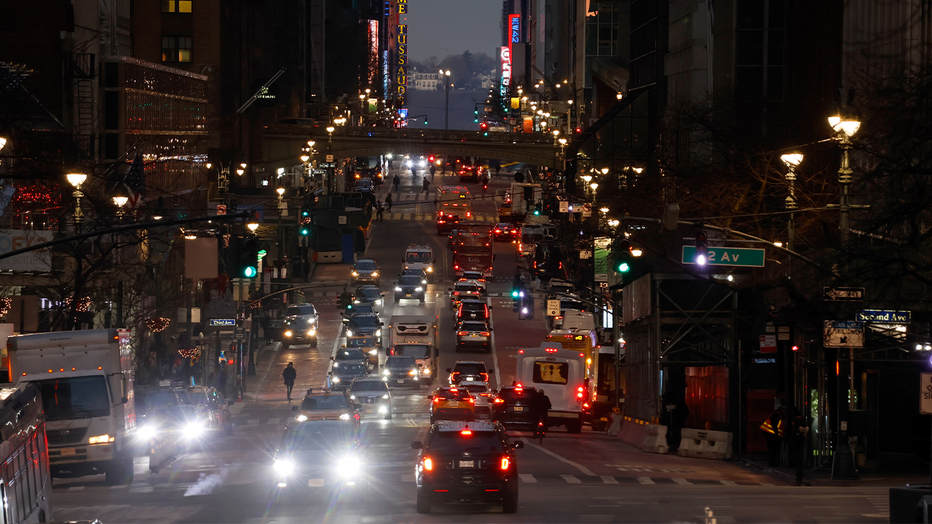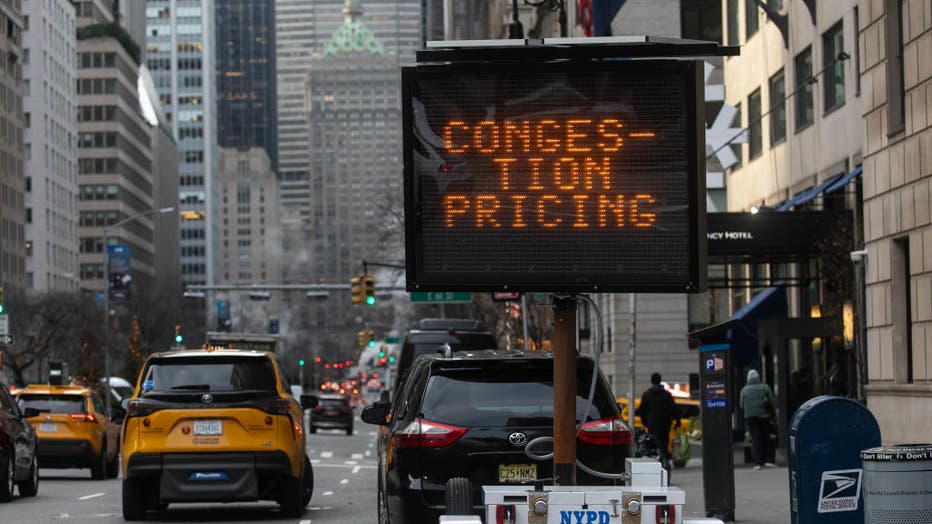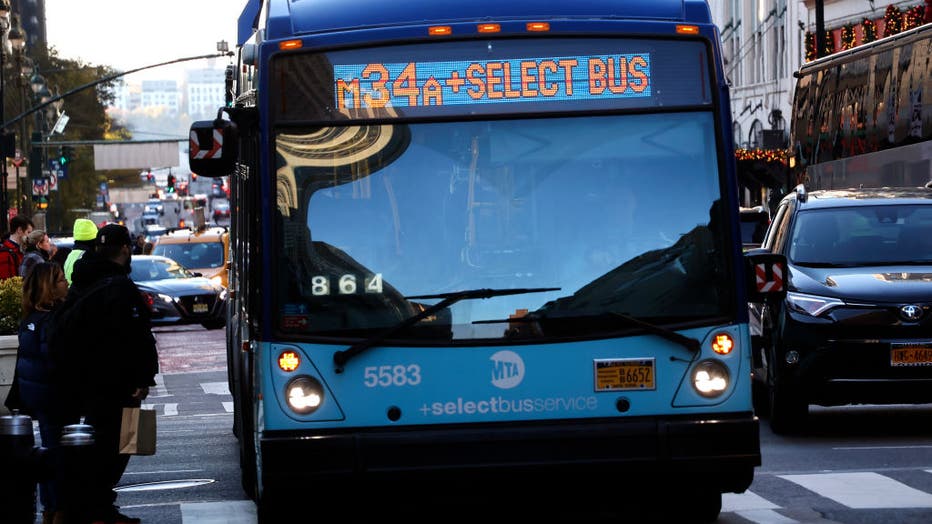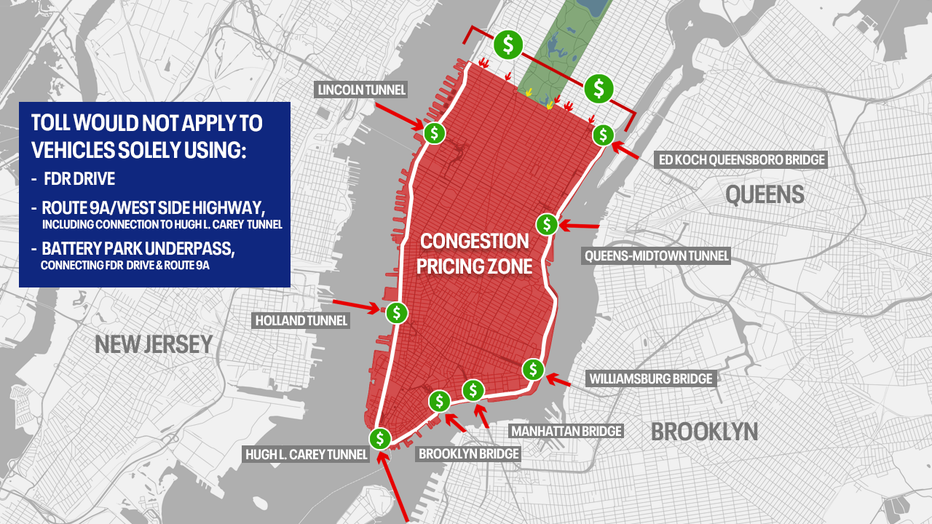Has NYC congestion pricing worked? MTA releases dramatic new traffic volume numbers

Is NYC congestion pricing working? What data shows
NYC congestion pricing has brought modest traffic reductions in its first week, according to preliminary data released by the MTA. FOX 5 NY's Briella Tomassetti has the details.
NEW YORK CITY - Quicker trips, fewer traffic jams, and shifts in commuting patterns are becoming more apparent.
MTA officials reported a wealth of early data confirming what many drivers have already noticed—a noticeable drop in congestion since the pricing plan took effect over three weeks ago.
"Before the start of congestion relief, talk of lawsuits and doubts dominated the conversation, but now it’s the undeniably positive results we’ve been seeing since week one," MTA Chair and CEO Janno Lieber said. "Better bus service, faster drive times and safer streets are good for all New Yorkers."
Has congestion pricing reduced traffic since it took effect?
By the numbers:
The MTA reported that since the congestion pricing plan was launched on Jan. 5, more than 1 million fewer vehicles have entered the Congestion Relief Zone (CRZ) than they would have without the toll.
Since the launch of congestion pricing, the MTA has reported that an average of 490,000 vehicles enter the CRZ daily, while an additional 63,000 travel through the Central Business District (CBD) using toll-exempt roadways.
TRANSCOM provided data to the MTA saying how drivers have been experiencing much faster commutes.
Here's what they're saying:

Traffic moves along 42nd Street as the sun rises on January 13, 2025, in New York City. (Photo by Gary Hershorn/Getty Images)
- Inbound trip times on all Hudson and East River crossings are now 10% to 30% faster or more than they were in January 2024.
- Drivers crossing via the Holland Tunnel are experiencing the most improved daily time crossings, with a 48% reduction on average during peak morning hours.
- The Williamsburg and Queensboro Bridges are both experiencing an average of 30% faster trip times.
- Drivers on the Long Island Expressway, Flatbush Avenue, NJ 495 and other roads leading up to crossings have been seeing improved speeds.
Data from TRANSCOM also showed that drivers in the CRZ are experiencing travel time improvements especially during afternoon peak hours with reductions as high as 59%.
Who is entering the CRZ?:
Data from the MTA shows that the majority of those entering the CRZ (57%) are passenger vehicles. Here's what other vehicles are entering the city:
- 36% of entries are taxis and for-hire vehicles.
- 4% of entries are small trucks.
- 0.5% of entries are large trucks.

A Congestion Pricing sign on Park Avenue in New York, US, on Friday, Jan. 3, 2024. New York's controversial plan to charge drivers for entering Manhattan's central business district starting on Sunday is facing a last-ditch challenge from neighboring
Nearly 90% of the vehicles traveling solely on the exempt routes of the FDR Drive and West Side Highway were passenger cars, the MTA said.
The MTA found that 43% of motorists entered the CRZ via north of 60th Street, 24% entered from Brooklyn, 16% entered from Queens and 17% entered from New Jersey.
How does congestion pricing impact transit riders?
How about bus riders?:
"Buses are running more reliably and efficiently and more customers are choosing to take them," said NYC Transit Senior Vice President of Buses Frank Annicaro.
The MTA said that faster traffic is improving the speeds of buses, especially on express service bus routes, which utilize Hudson and East River crossings into the zone.

NEW YORK, NY - NOVEMBER 12: An MTA bus stops to pick up passengers on 34th Street in Herald Square on November 12, 2023, in New York City. (Photo by Gary Hershorn/Getty Images)
Riders on express buses from Queens, Staten Island, and the Bronx are saving up to 10 minutes on average travel time, the MTA said.
What is the data showing about bus ridership?
- Bus ridership is growing with express weekend ridership seeing a 21% bump in ridership and 7% growth on non-express routes.
- Weekday express bus ridership is up 6% over January 2024.
- Ridership on the X27 bus route from Bay Ridge to Manhattan grew by nearly 15% on weekdays and 55% on weekends.
How about subway riders?:
The MTA found that subway ridership has also grown by 7.3% on weekdays and 12% on weekends when comparing January 2024 and January 2025.
How about LIRR riders?:
The MTA reports that in January, ridership at New Hyde Park, Douglaston, Garden City, Ronkonkoma, and Woodmere stations surged ahead of the overall Long Island Rail Road growth compared to last year.
What is congestion pricing?
What we know:
Congestion pricing is an electronic tolling system that charges vehicles for entering Manhattan's Congestion Relief Zone (CRZ) — the area below 60th Street, excluding certain highways like the FDR Drive and West Side Highway. The program aims to:
- Reduce gridlock in Manhattan's busiest areas.
- Encourage public transit use.
- Fund approximately $15 billion in transit infrastructure improvements.

This map shows the proposed zone for New York City congestion pricing.
The Source: This article contains information from the MTA and reporting from previous FOX 5 NY articles.

